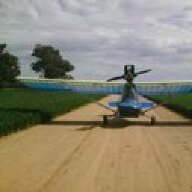-
Posts
3,469 -
Joined
-
Last visited
-
Days Won
75

Thruster88 replied to RFguy's topic in Engines and Props

Thruster88 replied to RFguy's topic in Engines and Props

Thruster88 replied to RFguy's topic in Engines and Props

Thruster88 replied to tillmanr's topic in Aircraft Incidents and Accidents

Thruster88 replied to Old Koreelah's topic in Instruments, Radios and Electronics

